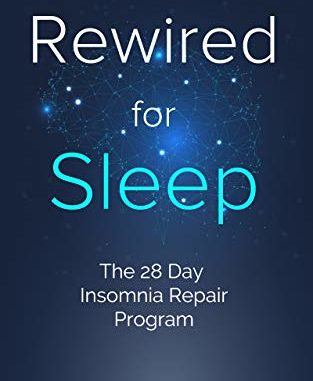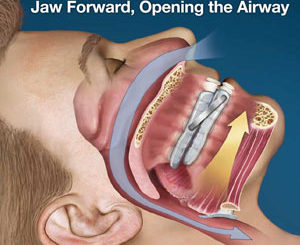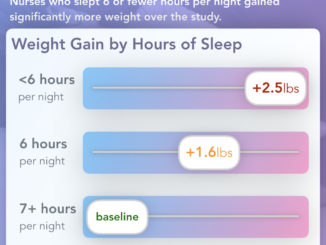
Why do we have trouble with insomnia? Too many of us think about NOT going to sleep, instead of thinking about getting to sleep when we hit the pillow at night. Fearful thoughts about not being able to sleep trigger the fight-or-flight response, and the stress chemicals thus produced make us anxious and prevent us from relaxing.
As we get more and more in the habit of worrying that we can’t get to sleep, we build a strong neural I-can’t-get-to-sleep pattern in our brain. This pattern automatically associates the fear of not being able to sleep with the very act of going to bed each night. Voila! The insomniac is born!
Most people pay little attention to directing their thoughts. Most people believe that you have to think whatever thought pops up in your brain, whether you like it or not. Nothing could be further from the truth. Successful people have always known that they can choose what thoughts they wish to think, and they can refuse to think the maverick, self-defeating, keep-you-awake thoughts that come galloping unbidden across their mind.
Basically, if we don’t know how we think, we won’t know why we have insomnia. People should know the basic neuroscience of how they get from one thought to the other. This kind of information is important. Once you know how your brain works you can make it work for you instead of against you.
If you haven’t given much thought to why you think the thoughts you do, you probably don’t know the difference between thinking about going to sleep and thinking about NOT going to sleep. It took me a while to understand the difference myself and I’m a therapist. Once your eyes are opened to it (no pun intended) you can see that the difference is subtle but huge.
If the dominant thought in your mind is that you can’t get to sleep, it will be very difficult to do so because the brain always follows the direction of its most current dominant thought. Going to sleep is a particular neural pattern that the brain naturally follows, but not if fearful thoughts become dominant over your natural getting-to-sleep neural pattern. Then, of course you trigger the fight or flight response and stress chemicals flood the brain which make sleep as impossible as 10 cups of strong coffee before bed.
When you exercise a muscle, you make it strong. When you exercise a thought, you make it dominant. You exercise a thought by thinking it over and over again, repetitively.
The trick in getting to sleep is to purposely, as an act of will, choose neutral, calm, boring thoughts repetitively and make them dominant, replacing the dominant fearful thought that you can’t get to sleep. Over time you can re-wire your brain out of its insomniac pattern.
You can build a new neural pattern that automatically triggers when you get into bed. You can actually build a neural bridge, with neutral thoughts and mind exercises, that links you automatically to the natural neural pattern of falling asleep.
My expertise is to help people re-wire their brain to get out of depression. But I began to notice that these same techniques that worked to re-wire your brain to get out of depression, also worked for insomnia. As people age, they wake up more often at night and these exercises can help them, too, to get back to sleep.
Here some examples of mind exercises for insomnia. The first is called “Make the Problem the Solution.” Suppose you are trying to get to sleep and a faucet is dripping, or there is noise outside, or somebody’s snoring. You can make the annoying noise into a meditation or mantra to help you get to sleep.
Simply close your eyes and relax your body. Then say to yourself, “With every sound of the dripping faucet I am going deeper and deeper asleep.” Hear the sound, and repeat the meditation. Visualize yourself feeling the sensation of falling every time you hear the sound. Falling deeper and deeper. Deeper and deeper. The repetition of this exercise can form a neural pattern to link the words “deeper and deeper” to the hard-wired neural process of falling asleep.
Another exercise is to fool the mind into believing you are asleep even if you aren’t really asleep. Just keep saying over and over to yourself “I am asleep, I am asleep, I am asleep. Whatever thoughts I think are just dreams because I am asleep. Whatever sounds I hear are just dreams because I am asleep. I am asleep. I am asleep.”
The same thing happens with this exercise. You re-wire your brain out of its fearful can’t-get-to-sleep neural pattern by making a neural bridge from your dominant thought “I am asleep” to the brain’s natural going-to-sleep neural pattern. The more you practice the exercise, the stronger becomes the neural pattern.
The Clever Accountant is another exercise.” Emotionally speaking we have to be very clever accountants. We should never, for instance, carry the failures of today forward into tomorrow.
As we are preparing for bed, it is very easy to slide into the remorses if we have over-eaten. It’s easy to beat ourselves up if we have taken some terrible social belly flop, haven’t finished the report, or didn’t get the house cleaned.
However accurate these thoughts may be, it is simply not helpful to our brain in any way to think them, especially when we are trying to get to sleep. We shouldn’t take these thoughts to bed with us anymore than we would take our vacuum cleaner or our golf clubs. These things are useful, just like thoughts are useful. But they are not appropriate for bedtime.
Thoughts of a failure, for instance, puts our brain in touch with an infinite number of negative neural connections in our head (via learned association) that will trigger the fight-or-flight response that leads to stress. Instead, we should keep carrying forward our successes, however small.
If we can’t magnify some success in our mind, we should keep repeating the small things as a kind of positive-train-of-thought which can “thought-jam” those insistent negative thoughts into silence. Yes, maybe we didn’t lose weight today but we lost two pounds so far this month. Yes, maybe we over-ate but there was probably some small thing we passed up.
“Hey I didn’t eat that third brownie. I was victorious over the third brownie. And anyway, it didn’t taste really all that good. Maybe I’m getting tired of junk food. I’m losing my taste for junk food. I think I’m starting to want to eat better, to eat healthier.” It’s even a victory of sorts to say “Hey, I did over-eat, and now it’s over. It’s gone. I am free from what I did today forever because today is soon gone and thank goodness for that.”
Our small triumphs don’t have to make sense in the grand scheme of things or even in the less grand scheme of our lives. They just have to be positive so that they will connect with other positive thoughts in our mind by learned association. This is really a mind trick like some bookkeeping is an accounting trick that makes mathematical, not necessarily common sense.
It’s the process that’s important, rather than the specific content. If we have been really low functioning, it is a victory to have brushed our teeth or to have taken a shower. For those of us who are high functioning, perhaps we didn’t win the Pulitzer this year, but we have done the first chapter of our next book.
Don’t forget that our pain is exactly the same whether we are high functioning or low functioning. So the victories, however small, can bring us equal emotional relief. The inherent importance of victories is not relevant. The process of being positive is more important than the content of the positivity.
Brushing our teeth is no less positive than writing the first chapter of a book. It will have an equally positive effect, by learned association, with whatever positive mindsets exist in the neurons of our brain.
Not only are we connecting with the positivity in our mind instead of the negativity that can trigger the fight-or-flight response, but we are re-wiring another stronger positive neuronal pathway out of anxiety and stress with every single good thought we think. This is the pathway to the natural process of falling asleep: practicing repetitive exercises of calm acceptance.
Even nonsense thoughts repetitively thought will replace stressful thinking. I wake up every two or three hours myself. Usually to get back to sleep I just grab for the latest two or three word sentence that I thought. Last night, for instance, I was thinking about a show on TV that I had just seen and the phrase, “tailor will fix it,” happened to enter my mind. I just used that to get back to sleep. “Tailor will fix it. Tailor will fix it. T Tailor will fix it. Tailor will fix it. Any non emotional word or phrase works. Through repetitively thinking it, it soon lulls the mind, and connects with the natural process of falling asleep. Pleasant dreams!
Proudly WWW.PONIREVO.COM



